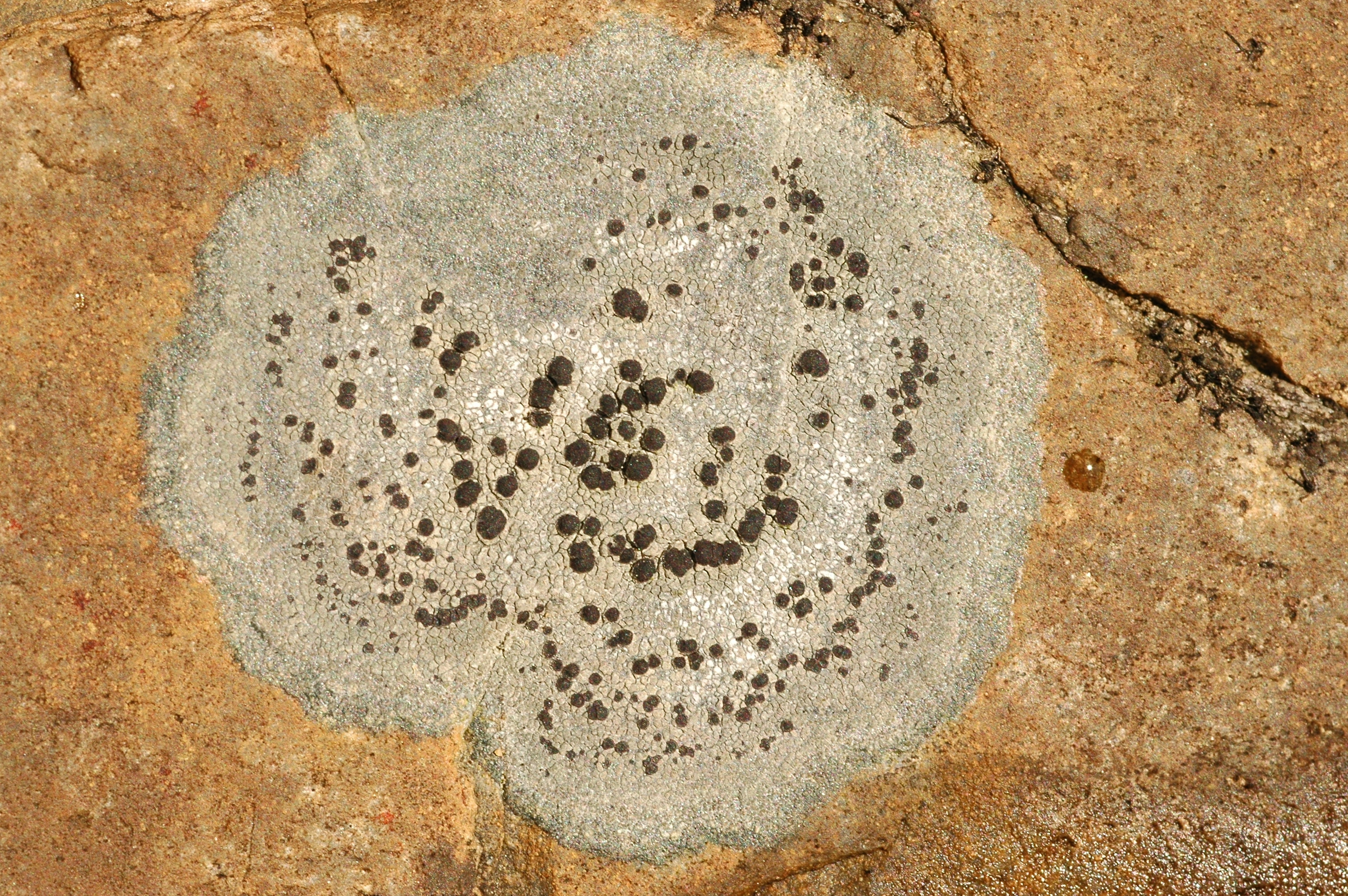Rhizocarpon umbilicatum
- Innhold
- Morphology
- Chemistry
- Habitat
- Comment
- Look-alikes
Morphology
Thallus continuous or partly rimose, up to 5 cm diam., pure white, dull, pruinose; hypothallus usually poorly developed, black, white pruinose; medulla KI–. – Apothecia up to 1.5 mm diam., black, mainly orbicular, plane or becoming moderately convex, with a thick and usually persistent margin; disc epruinose; margin distinctly pruinose; excipulum brownish or greenish black in the rim, inner part pale brown to colourless, containing crystals partly dissolving in K, K+ yellow; hypothecium dark brown, K–; hymenium colourless; epihymenium olivaceous brown, containing crystals dissolving in K (crystals K+ yellow); ascospores 8 per ascus, eumuriform, persistently colourless, 20–30 × 10–16 µm. – Conidiomata not seen.
Chemistry
Stictic acid; spot tests: medulla PD+ orange, K+ yellow, C–.
Habitat
On calciferous rock, mainly in the mountains, but also scattered in the lowlands.
Comment
The species is often difficult to distinguish from R. petraeum. It differs mainly in having a pure white (not whitish grey to medium grey) thallus, somewhat smaller ascospores with fewer septa, and more elevated apothecia which are not arranged concentrically.

